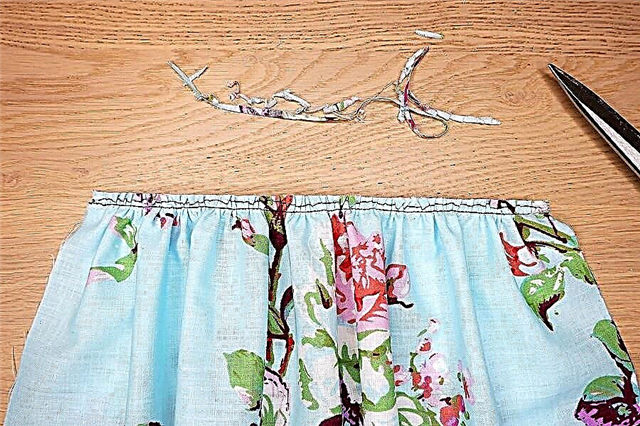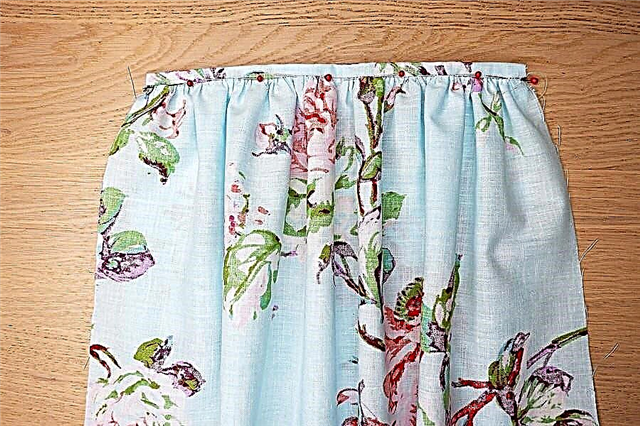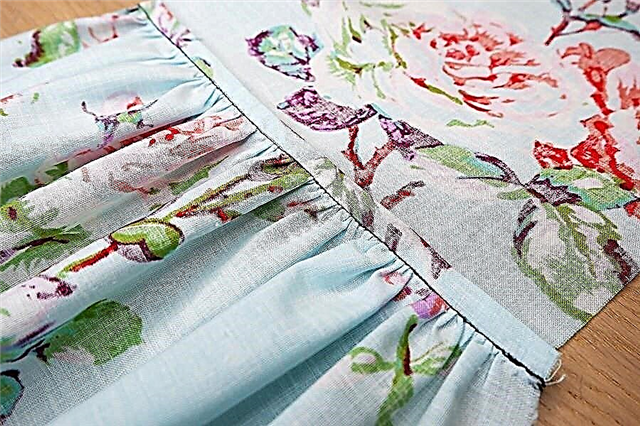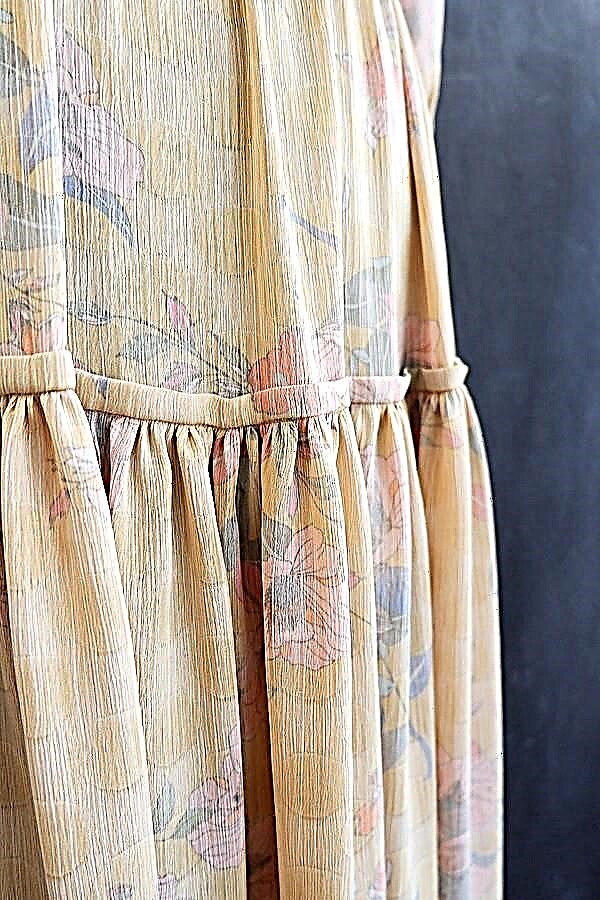To make the frill stitching allowance in products made of thin and delicate fabrics look elegant and neat, it is best to process it without using an overlock.


In this master class, we will show how to do this without extra effort. This method is applicable to the processing of products from thin and transparent fabrics, such as chiffon, silk, cambric, muslin. The method involves grinding a frill allowance with an allowance of the main part of the product and is a bit like the Hong Kong processing method.
Hong Kong slicing
You will need:
- tailor pins;
- scissors for fabric.
What are ruffles, shuttlecocks and frills

Prepare the product for joining the frill: make side seams and process the allowances.
The frill sewing allowance is approximately 2.5 cm.
Prepare the frill: make side seams and work the bottom to the bottom cut.
The upper frill allowance is approximately 0.7 cm.


Now you need to pick up the frill on the upper cut.
To do this, lay two parallel pick-up stitches at a distance of 0.5 and 1 cm from the cut with a minimum thread tension and with a stitch length of ~ 4-7 mm.

Assemble the frill to the required length (equal to the length of the lower cut of the dress) by pulling on the lower threads.
The ends of the threads need to be tightly tied and not cut short.

Fold the frill and the main part purl parties, combining slices.
Baste or chip with pins.

Lay the sewing stitch at a distance of approximately 0.7 cm from the cuts (try to lay the stitch in the middle between the sewing stitches).

Remove the pins.
Remove the bottom pick-up stitch.
Iron the stock.
Trim the stock if necessary (up to about 5 mm).
If you want to make the processing particularly elegant in a product made of a thin and transparent fabric, the allowance can be cut to 3 mm.

Turn the detail of the dress up.
It can be seen that the allowances for parts are now located on the front side.
Iron the allowance for the main part.

Try to iron so that no sagging from the side of the main part - tighten the part from the seam.


Wrap the allowance as shown in the photo with the main part and lock it in position with pins or catch it.

Lay the stitch exactly in the seam of the frill.

Remove the pins and iron the stock.

Again, unscrew the detail of the dress up and iron the allowance up.
Try to iron so that there are no sagging on the front side - tighten the parts from the seam.

It looks like a frill allowance in finished form from the inside out.

And so on the front side.



Examples of ruffles processed in this way in finished chiffon products.
How to quickly and beautifully process allowances in a lace product
Life hack: how to use a sheet of paper to lining stocks
The author of the master class and photo: Daria Tabatchikova

By education, Daria is a PR specialist and economist, but several years ago she devoted herself entirely to her favorite business - sewing.
She studied sewing from magazines, books and using the Internet, there are also sewing courses in the arsenal, but Daria considers herself self-taught. She loves to study specialized sewing literature from different years and countries, and then put her knowledge into practice.
At the end of 2017, Daria became the winner of the festive contest from BurdaStyle.ru.
She leads her Instagram page and VKontakte group.
Material prepared by Julia Dekanova



